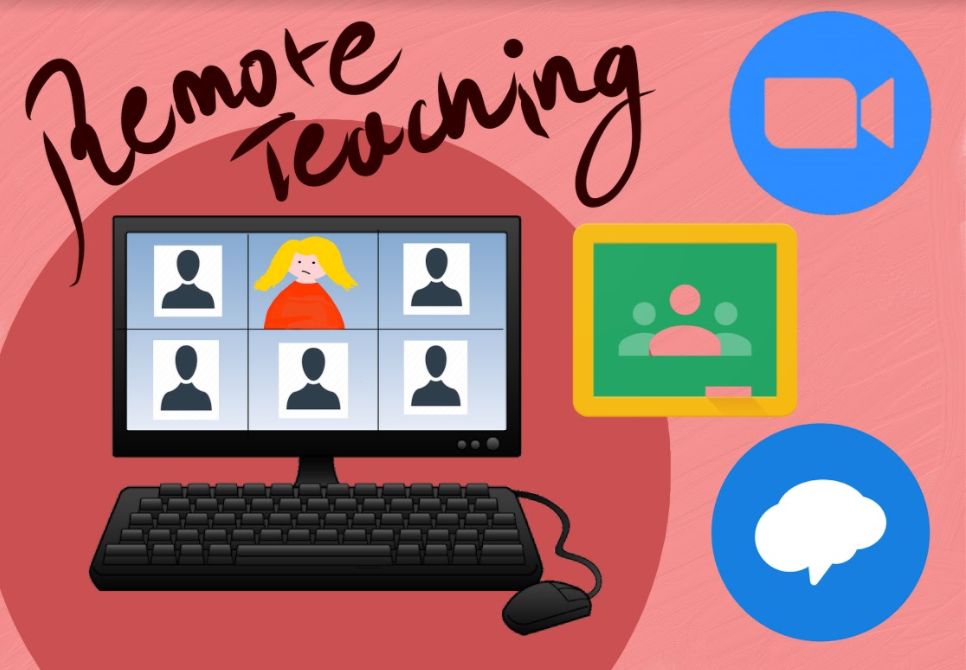
The start of the school year for teachers of any given year is filled with an assortment of planning, revising, and improvising. However, this year, along with disorienting and unfamiliar reopening plans, teachers have faced a new challenge: reimagining remote learning.
Several teachers have described engaging all students in remote learning to be a challenge. “It’s certainly harder to engage students when students don’t keep their videos on and their mics accessible,” science teacher David Stern said.
To increase engagement, teachers have experimented with new platforms such as Nearpod to make their lessons more interactive. “[Nearpod] allows students to draw images and answer open ended questions, and that coupled with Zoom’s ability to enter breakout rooms and work collaboratively,” Mr. Stern said. Others have found the private chat feature on Zoom to be beneficial. “With the private chat [feature] on Zoom, students are a lot more willing to ask questions or share that they [need help],” math teacher Abid Choudhury said.
“I’ve been particularly fond of using my iPad and smartboard as an extension to my screen or as a screen share and showing how to get through the math as if we were all sitting in a classroom around a whiteboard,” Mr. Stern commented.
Mr. Choudhury shared that he encourages participation by allowing students opportunities outside of the live instruction period. “I’ve been [assigning] weekly reflections [asking students] which topics they are struggling with or not struggling with… I can engage a higher percentage of students than I would have otherwise.”
Many teachers described a more difficult experience discerning struggling students. “I can’t walk around a room, peer over a student’s shoulder, and look at their work while going through their thought process on the spot,” Mr. Stern said. “But… using Nearpod, I’m able to access each answer individually where all of their answers show up on my end, [and] quickly scan to see which students are getting it and which are not and figure out who needs help and who doesn’t.”
Physical Education classes have also experienced a shift in instruction. “Physical education doesn’t translate as easily as giving a lecture… I don’t want my kids to be sitting in front of the screen of 6 hours a day. I want them to start doing, exercising, stretching, and feeling good, not just sitting,” Physical Education teacher Maria Assante said. Students in her class exercise in their own time, choosing from various different workouts, and submitting a screenshot of an app that records this workout as proof.
“I haven’t been able to figure out the atmospheric element that can bridge every Zoom participant into feeling like they are part of a genuine classroom experience so it’s still a bit challenging,” explained English and theater teacher Kevin Schwab. He expressed his disappointment on the shutdown of schools as he had hoped to begin teaching some socially distanced stage movements as students returned, but admitted that he was still pleasantly surprised by the success of remote learning. He also emphasized the importance of flexibility and patience given the circumstances.
With the lack of physical interaction, many teachers feel it is harder to form personal relationships with students. “Teachers and students are on Zoom together each day, but it’s still not the same as being together in the classroom,” Social Studies teacher Jamie Baranoff said. “Club time has been drastically limited… Students no longer come to see teachers during their [free] bands to discuss issues or joys in their lives, so as a faculty we are learning less about our students this year,” physics teacher Joshua Raghunath shared.
“[There is] less of a community feel within each classroom, as things like friendly banter and the ability to engage in hands-on classroom activities is now greatly reduced,” Mr. Raghunath said. “Within each lesson when possible [I tell] funny stories/anecdotes, linking curriculum to application, and allowing student choice for things like who they work with.”
Despite the challenges, teachers still hope to give students a meaningful experience. “As long as we hold students to a high standard, the students will reach that standard,” Mr. Stern said.
“I teach seniors; it makes me sad that [they] are losing out on the senior experience so we really want to… preserve as much as we can of the senior experience, like the election simulation,” Ms. Baranoff said. “I’m… trying to be super understanding, and super flexible, and also super accessible.”
“My goal this year is to still provide the same caliber of education to my students, to be there for them when they have questions whether they are academic or not, and to potentially have some laughs and learn about life along the way,” Mr. Raghunath concluded.
“It’s not an ideal situation but we will look back on this era with some pride when the pandemic is behind us,” concluded Mr. Schwab.
Art by Sabrina Khaleque



























